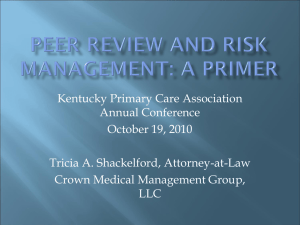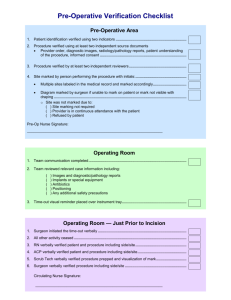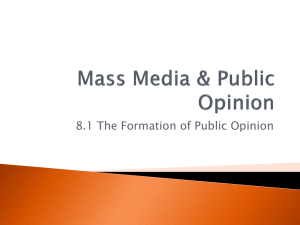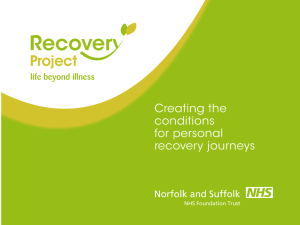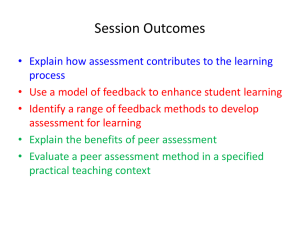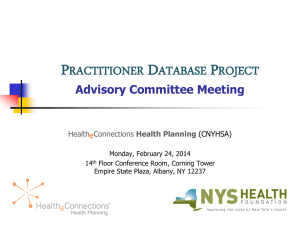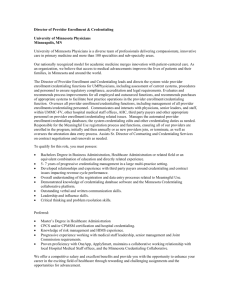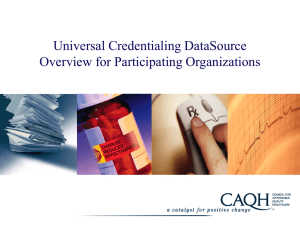How to Speed Up the Initial Appointment Process without
advertisement
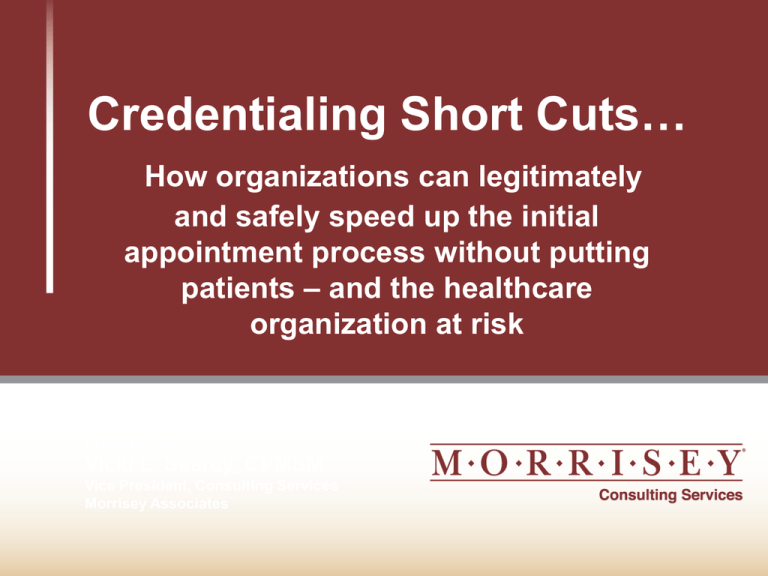
Credentialing Short Cuts… How organizations can legitimately and safely speed up the initial appointment process without putting patients – and the healthcare organization at risk Presented by Vicki L. Searcy, CPMSM Vice President, Consulting Services Morrisey Associates Utah Association Medical Staff Services August 13, 2010 Presented by Vicki L. Searcy, CPMSM Vice President, Consulting Services Morrisey Associates (312) 784-5579 vsearcy@morriseyonline.com We Will Discuss… • How organizations can legitimately and safely speed up the initial appointment process without putting patients – and the healthcare organization at risk – Pre-application process – Application process • Documents that applicants are required to submit • How to obtain a complete application – Verifications • What to verify and verification methods – Accelerating the evaluation and decision-making process • Elimination of “idle time” Pre-Application Process • Historic purpose – Prior to implementation of National Practitioner Data Bank • Process only applicants with real interest in organization to avoid wasting time and money • Eliminate processing of applications that do not meet organization requirements in order to avoid denials • Current purpose? – Pre-application vs. intended practice plan Application Process • Ask only for information that is necessary/required and will be used – Copies of documents? Purpose? • Licenses • Diplomas • Etc. – CV • Think about messages that are being sent to practitioners about the credentialing process – If applicants are asked to sign documents when they apply that wouldn’t be necessary unless they were appointed, are we sending a message that the credentialing process is a mere formality? Verifications The Basics • The Application – the data collection tool – Complete professional history – Request for clinical privileges – Consent/Release/Attestation Risk vs. Value vs. ROI • WHAT GETS VERIFIED? – We’ve Always Done It That Way – Risk Assessment – Value to the Organization – ROI – staff time, wait time, supplies, etc. Verified vs. Evaluated • Verified – Current Licensure – Relevant Training • What is “Relevant” • What isn’t – Current Competence • What is “Current” Verified vs. Evaluated • Evaluated – The Joint Commission requirement – Licensure • Challenges to Licensure – Relevant Training – Peer/Faculty Recommendations • Health Status – Ability to Perform Verified vs. Evaluated • Evaluated – TJC Requirement – Data from Professional Performance, if available – NPDB • Evidence of Unusual Pattern or Excessive Number of Professional Liability Actions Resulting in Final Judgment – Voluntary/Involuntary (licensure, membership, privileges) Verified vs. Evaluated • Verified and Evaluated – Organization Specific – Board Certification – Criminal Background Check – Claims History – All Licenses (All states, current/previous) Gaps • Joint Commission Standard – None • NCQA Standard – Work History (5 years) – No Primary Source Verification (PSV) – Gap - >6 month to 1 year (verbal/written) – Gap - > 1 year (written) Hospital Affiliations vs. Peer References • Regulatory Standard Requirements Related to Verification of Healthcare Organization Affiliations • Hospital Affiliation Letter – – – – – – Name Dates of Affiliation Current Status Specialty Privileges Quality? – Competence? Hospital Affiliations vs. Peer References • Peer Reference/Recommendation – Peer – “Current” Competency Evaluation • Medical Clinical Knowledge, Technical Skills, Clinical Judgment, Interpersonal Skills, Communication Skills, Professionalism Hospital Affiliations vs. Peer References • Peer Reference/Recommendation – Department Chair – Medical Staff President/ VPMA/ Quality Chair – Training Director – Friends/Family??? Risk vs. Value vs. ROI • Peer References (How Many) • Gaps (How Long – How Far Back) • Hospital Affiliations (Current – Previous How Far Back) • Claims History (How Far Back – Where do you get it) • All Current and Previous Licenses Summary • Review Current Practices • Meet the requirements • When your organization decides to exceed requirements make sure that there is a return on investment • Red Flags may precipitate verification of additional information Accelerating the Evaluation Process • Elimination of “idle time” – How much time is spent waiting for Department Chairs to review a file, the Credentials Committee meeting, the MEC meeting, etc.? – Is there a way to act more expeditiously on files that are determined to be “problem-free?” – Does the Medical Executive Committee always need to meet in person to take action on “problem-free” credentialing decisions? Can they “meet” more often than once a month? Accelerating the Evaluation Process • Temporary Privileges Pending Appointment – Joint Commission sets the rules • Accelerated Credentialing – Organization-specific rules • Expedited Credentialing – Joint Commission allows the Board to have an expedited decision-making process In Conclusion… • Critically evaluate: – How you make applications and privilege delineation forms available to applicants • Online applications and privileging is faster and has other benefits – Critically evaluate what is being verified vs. what is required and how the nonrequired verifications benefit your organization by assisting in making better decisions – Eliminate wasted time from the evaluation and decision-making process – Streamline whenever possible and practical Q&A

